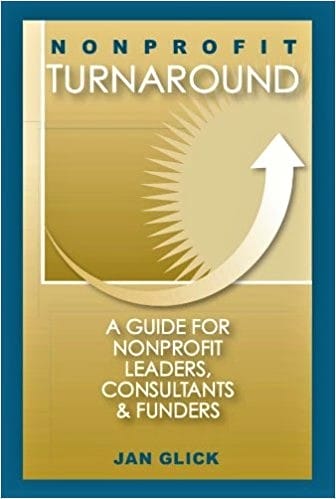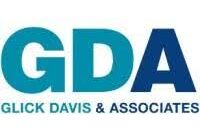Strategic planning is one of the most critical responsibilities of nonprofit boards and executive leadership. Yet even the best-written plans fall short without one essential element: nonprofit board alignment. When a board is unified around mission, vision, and strategic direction, the result is not just a plan on paper—it’s a roadmap that drives impact, inspires stakeholders, and sustains long-term growth.
For executive directors, board chairs, and governance professionals, achieving alignment is both an art and a science. It requires fostering a culture of trust, clarity in roles, and a disciplined approach to nonprofit strategic planning. In this article, we will explore why board alignment matters, outline nonprofit board best practices, and share proven strategies to enhance nonprofit board engagement and governance for lasting success.
Table of Content
- Why Board Alignment Matters in Nonprofit Strategic Planning
- The Board’s Role in Strategic Planning: Ideal vs. Pitfalls
- Practical Steps to Foster Board Alignment
- Maintaining Alignment After the Plan Is Written
- Embedding Governance Best Practices
- Nonprofit Board Engagement Strategies That Work
- The Impact of Strong Alignment on Mission and Community
- Conclusion
- FAQs
Why Board Alignment Matters in Nonprofit Strategic Planning
The Board’s Role in Strategic Planning: Ideal vs. Pitfalls
Practical Steps to Foster Board Alignment
Maintaining Alignment After the Plan Is Written
Embedding Governance Best Practices
Nonprofit Board Engagement Strategies That Work
Why Board Alignment Matters in Nonprofit Strategic Planning
Building alignment ensures that every board member is not only committed to the mission but also moving in the same direction with staff leadership. Without it, organizations risk fragmentation, mission drift, and stalled progress.
Benefits of Strong Board Alignment
-
Unified Vision: Everyone agrees on the “north star” guiding the organization.
-
Improved Decision-Making: Leaders evaluate opportunities with the same strategic lens.
-
Stronger Fundraising: Donors respond to a cohesive, inspiring vision.
-
Greater Sustainability: Focused resources and strategic consistency ensure long-term impact.
-
Higher Engagement: Aligned boards are more motivated and invested in outcomes.
The Board’s Role in Strategic Planning: Ideal vs. Pitfalls
Aspect
The Ideal Approach
Pitfalls to Avoid
Overall Role
“Noses in, fingers out”: Board shapes strategic direction but leaves operations to staff.
Over-involvement: Micromanaging operational details.
Under-involvement: Rubber-stamping final plans.
Core Responsibility
Active, substantive role in developing, approving, and supporting the plan.
Treating planning as a one-time event instead of a living process.
Focus Area
Big-picture thinking: mission, vision, values, and strategic priorities.
Getting bogged down in daily tasks that belong to staff.

Practical Steps to Foster Board Alignment
1. Clarify Mission, Vision, and Values
Begin the planning process by reviewing and reconfirming the organization’s mission, vision, and values. This step ensures everyone starts from the same page and aligns deeply with the organization’s long-term strategy
2. Conduct a Joint Assessment
Engage both board and staff in an analysis. This collaborative approach builds shared understanding of strengths, weaknesses, opportunities, and threats—creating a fact-based platform for decision-making.
3. Structure the Right Involvement
-
Create a Planning Committee: A small group of board members leads the process and champions the final plan.
-
Use Structured Feedback Tools: Gather broad input via surveys, interviews, or listening sessions without slowing the process.
4. Build a Strong Board-Staff Partnership
The relationship between the board chair and the chief executive is critical. As seen in many leadership transitions, engaging in executive search best practices can strengthen alignment by ensuring the right leaders are in place to champion strategy.
5. Foster a Cohesive Board Culture
Strong culture leads to stronger alignment. Include time for relationship building in meetings and hold occasional board retreats or social gatherings.

Maintaining Alignment After the Plan Is Written
Creating alignment is not a one-time achievement; it’s an ongoing commitment.
-
Integrate Strategy into Meetings: Make progress on strategic goals a standing agenda item.
-
Quarterly Reviews: Treat the plan as a living document and adapt as circumstances evolve.
-
Preparation Materials: Share materials in advance and encourage meaningful participation.
-
Board Dashboards: Use visual tools to track progress on strategic priorities.
Embedding Governance Best Practices
Strong nonprofit board governance is at the heart of alignment. Consider the following nonprofit board best practices:
-
Recruit for Skills and Passion: Combine mission commitment with professional expertise.
-
Diversity, Equity, and Inclusion: Ensure representation that reflects the communities served.
-
SMART Goals: Define objectives that are specific, measurable, achievable, relevant, and time-bound.
-
Consensus Decision-Making: Create buy-in by ensuring every board member feels heard.
-
Board Training & Onboarding: Equip members with the knowledge and context they need to govern effectively.

Nonprofit Board Engagement Strategies That Work
Engagement is essential for alignment. Try these strategies:
-
Open communication channels: Combine mission moments with data-driven dashboards.
-
Use board self-evaluations to identify strengths and gaps.
-
Celebrate wins tied to strategic milestones.
-
Leverage technology like board portals to simplify collaboration.
The Impact of Strong Alignment on Mission and Community
When boards and staff are aligned:
-
Fundraising improves because donors see clarity of purpose.
-
Decisions are smarter, faster, and more consistent.
-
Organizational sustainability grows as priorities stay focused.
-
Community trust increases because alignment ensures accountability and transparency.
Ultimately, nonprofit strategic planning thrives not through documents alone, but through a cohesive leadership culture that consistently champions mission and vision.
Conclusion
Building nonprofit board alignment is not a one-time task; it is a continuous commitment that underpins every successful nonprofit strategic planning effort. By clarifying mission and vision, structuring meaningful participation, and embedding nonprofit board best practices, boards and executives create the conditions for long-term impact.
When boards embrace intentional nonprofit board engagement strategies—from fostering a strong culture to conducting regular reviews—they transform strategic plans from static documents into living roadmaps for growth. Strong nonprofit board governance ensures that decisions remain mission-focused, inclusive, and adaptable to change.
Ultimately, alignment between board and staff leadership drives more than organizational efficiency—it inspires trust, strengthens community impact, and sustains the mission well into the future. Nonprofits that invest in board alignment will not only achieve strategic clarity but also position themselves as resilient, forward-thinking organizations capable of thriving in a complex and evolving landscape.
Found this post useful? Feel free to share.
Learn more about the Strategic & Business Planning services Glick Davis & Associates Offer
Frequently Asked Questions
It’s the process of ensuring that board members are unified in vision, priorities, and governance practices during nonprofit strategic planning.
Related Articles
Nonprofit Turnaround: A Guide for Nonprofit Leaders, Consultants and Funders

